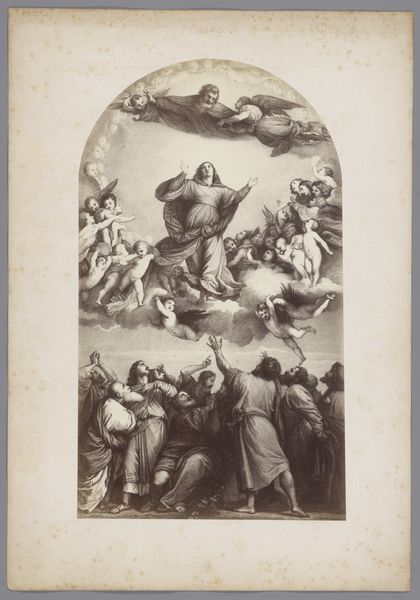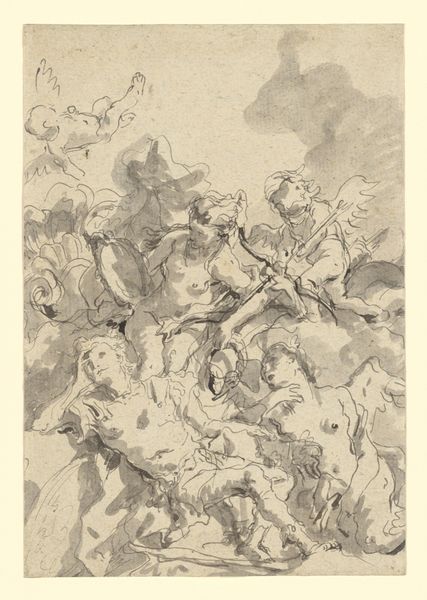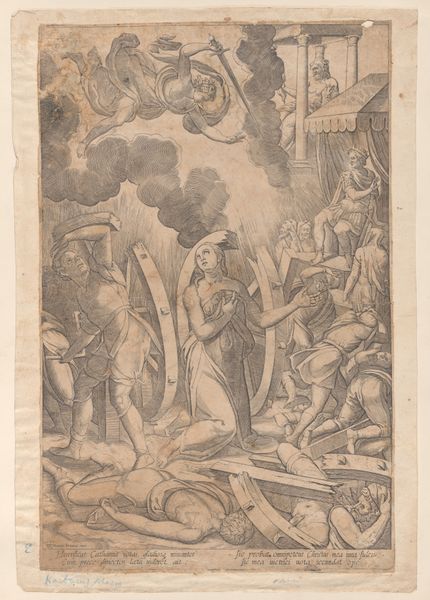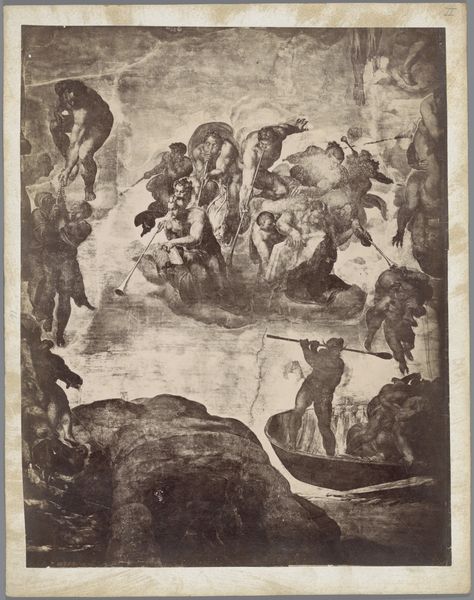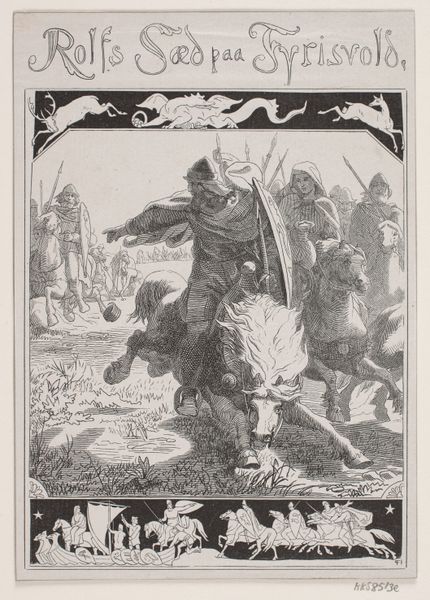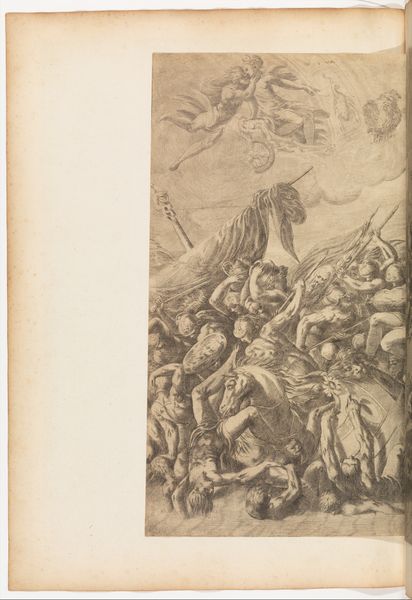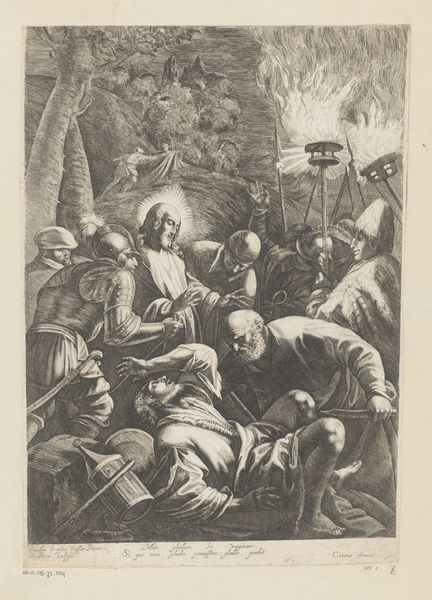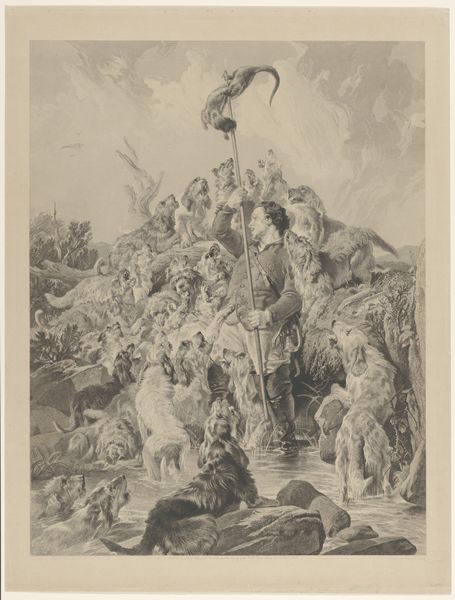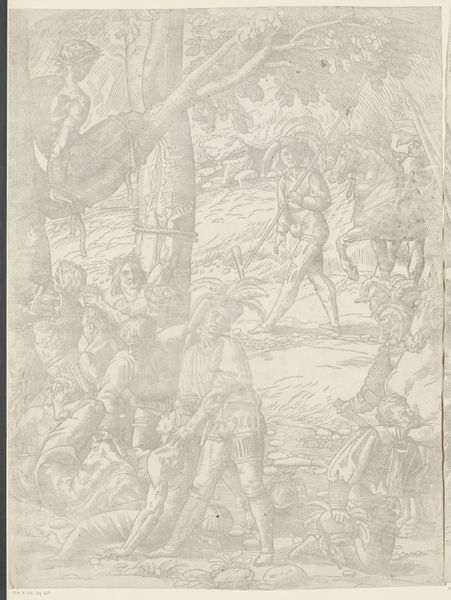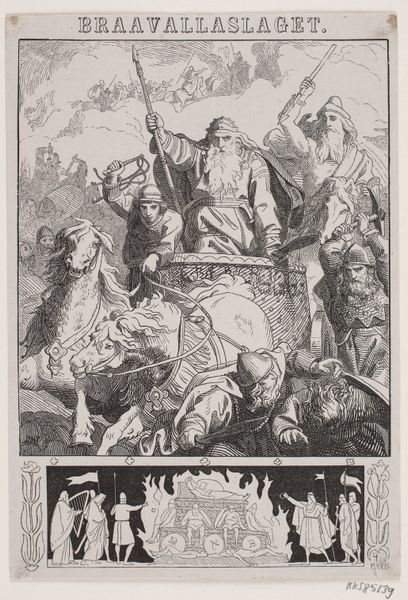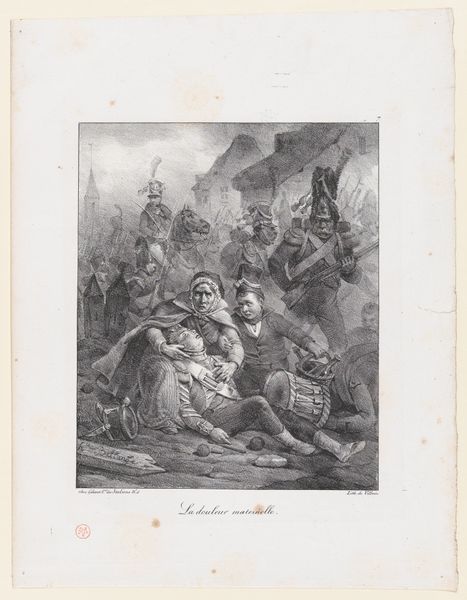
Fotoreproductie van de tekening door Arthur Grottger uit de serie Litouwen, voorstellende een man met een vlag tijdens een gevecht c. 1870 - 1890
0:00
0:00
Dimensions: height 139 mm, width 104 mm
Copyright: Rijks Museum: Open Domain
Editor: This is a photographic reproduction of a drawing, likely a lithograph or print, by Arthur Grottger, dating from around 1870 to 1890. It's from his series "Lithuania" and it depicts a battle scene with a man raising a flag. There's a really powerful sense of struggle and sacrifice, with fallen figures and a fierce determination on the flag bearer's face. What strikes you most about this piece? Curator: Immediately, I’m drawn to the way Grottger uses romanticism to visualize a very specific political context. Knowing this is part of his "Lithuania" series, we can interpret the battle as representing the Polish-Lithuanian struggle for independence against Russian imperial rule. How does this layer of historical context reshape your initial reaction to the scene of struggle? Editor: It definitely intensifies it. Knowing it’s about a real struggle for liberation, not just some generic battle, gives the image a deeper resonance. It becomes about resistance and the cost of freedom. Curator: Precisely. Consider also how the artist chooses to represent the figures. They are not just soldiers; their faces are individualized, and filled with raw emotion. Grottger's artistic choice emphasizes the humanity inherent within these fighters, framing their struggle in explicitly humanistic terms. What does that suggest about Grottger's intent? Editor: I think he's trying to ennoble their fight, to memorialize the people who were involved in the uprising. Curator: Yes, it serves as a visual act of resistance itself. By immortalizing these figures, Grottger challenges the official narrative of imperial oppression and elevates the struggle for national identity. And that's why art like this remains potent; it speaks to universal themes of resistance and self-determination across different historical and cultural contexts. Editor: Wow, I hadn't considered all those layers of meaning. It’s much more than just a historical image; it’s a statement about power, identity, and resistance. Thanks for opening my eyes to the social and political forces that shaped this artwork!
Comments
No comments
Be the first to comment and join the conversation on the ultimate creative platform.

